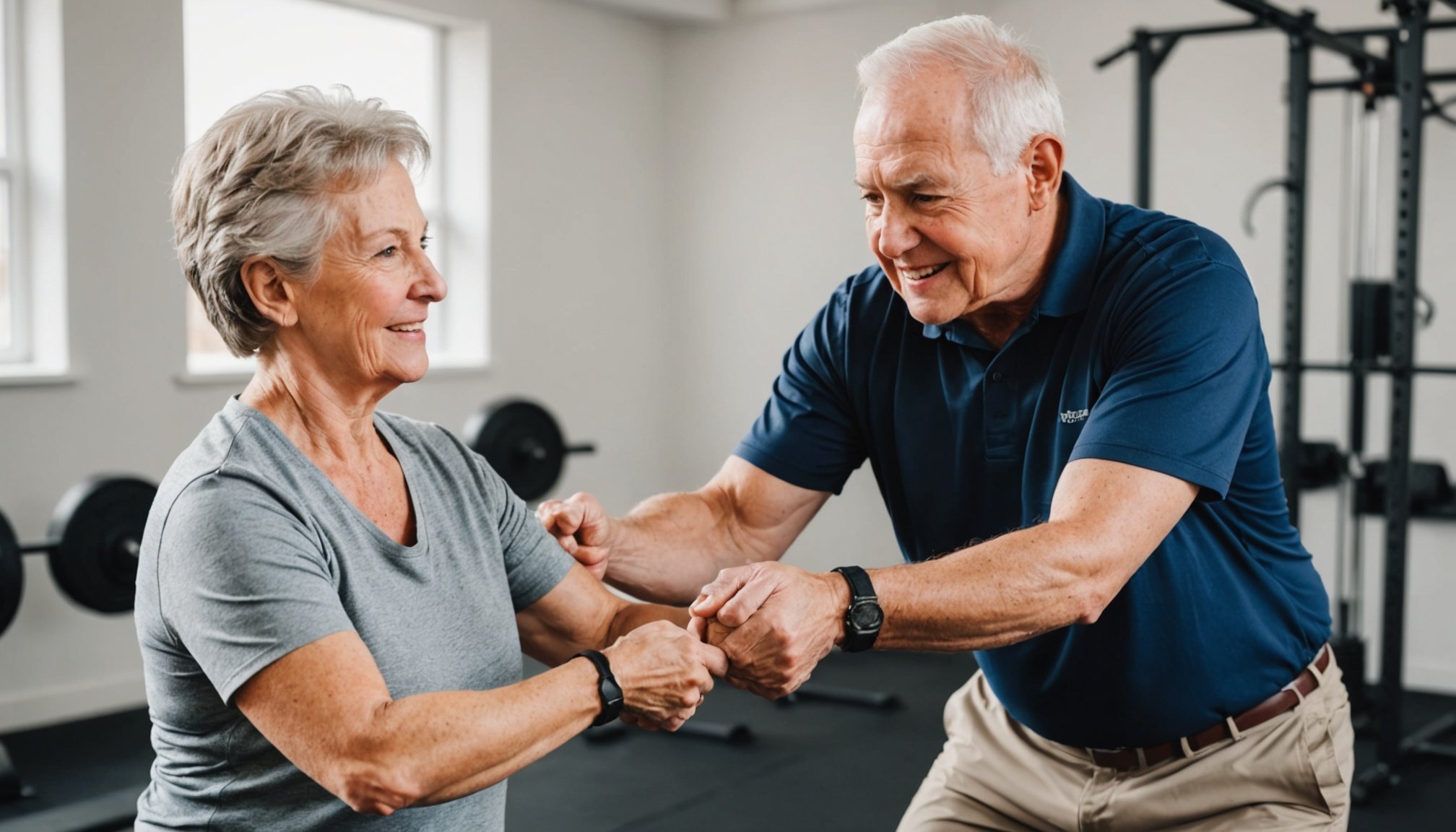As we age, maintaining a healthy lifestyle becomes crucial, especially when physical changes challenge our muscle and bone integrity. Gone are the days when exercise was reserved only for the young. Today, older adults are increasingly embracing strength training as a vital component of their fitness regimen. This shift presents a balance between health and vitality, significantly improving the body‘s functionality. In this discussion, we unravel the myriad of benefits associated with strength training for the elderly and explore strategies for integrating it safely into their daily routines.
Why Strength Training is Essential for Older Adults
The natural progression of aging often leads to a decline in muscle mass, affecting overall health and increasing the risk of physical injuries. Incorporating strength exercises helps counteract muscle atrophy and enhances body balance.
This might interest you : What are the psychological effects of chronic loneliness, and what steps can you take to foster meaningful connections?
Enhanced Muscle Mass and Strength
- As we age, muscles naturally begin to weaken, leading to diminished strength and endurance. Strength training is a powerful method to rebuild lost muscle and preserve muscle mass.
- Regular training sessions can lead to significant improvements in muscle strength, enhancing everyday capabilities such as climbing stairs or carrying groceries.
Improved Bone Density
- Osteoporosis is a common concern for many elders. The resistance involved in strength exercises stimulates bone formation, leading to increased bone density.
- This reduces the risk of fractures, ensuring a safer, more active lifestyle.
Better Balance and Reduced Fall Risk
- With age, the body’s balance naturally deteriorates, increasing the likelihood of falls.
- Strength training strengthens core muscles, improving balance and coordination, crucial for fall prevention.
Cardiovascular Health Benefits
- Besides muscle improvements, strength training plays a pivotal role in maintaining heart health, thereby reducing the risk of cardiovascular diseases.
- It enhances blood circulation and helps lower bad cholesterol levels, offering a holistic approach to physical well-being.
Incorporating Strength Training Safely
Embarking on a strength training journey as an older adult demands careful consideration and a focus on safety. Here are a few strategies to ensure a safe and effective training regime:
Consult with Healthcare Professionals
- Before starting any exercise program, consulting with a physician or a physical therapist is crucial. They can offer personalized advice that aligns with individual health conditions and physical capabilities.
- A healthcare provider can identify any potential risk factors and recommend the appropriate intensity level for training.
Start Slow and Progress Gradually
- Begin with light weights or resistance bands to prevent overexertion. Over time, as strength improves, gradually increase the weight or resistance.
- Consistency is key; aim for two to three sessions per week to maximize benefits without overwhelming the body.
Prioritize Proper Form
- Correct posture and exercise technique are essential to avoid injuries and effectively target the intended muscles.
- Consider hiring a certified trainer specializing in older adults to teach proper techniques and ensure exercises are done safely.
Listen to Your Body
- Pay attention to the body’s signals. If an exercise feels uncomfortable or causes pain, it’s crucial to stop and reassess.
- Rest is vital; ensure adequate recovery time between sessions to allow muscles to repair and grow.
Types of Exercises Suitable for Older Adults
Understanding which exercises are appropriate ensures that the training is both effective and enjoyable. The following exercises can be easily adapted to suit various fitness levels:
Additional reading : What are the principles of intuitive eating, and how can they help you develop a healthier relationship with food?
Resistance Band Workouts
- These versatile bands offer a gentler approach to strength training. They are perfect for improving muscle tone and flexibility without placing undue stress on the joints.
- Resistance band exercises can be performed seated or standing, making them suitable for all age groups.
Dumbbell Exercises
- Lightweight dumbbells are excellent for targeting specific muscle groups, such as the arms, shoulders, and back.
- Start with lighter weights and increase gradually, focusing on reps and proper form.
Bodyweight Exercises
- Simple exercises like squats, lunges, and wall push-ups utilize one’s body weight to build muscle strength.
- These can be done anywhere, making them a convenient option for older adults.
Balance and Core Strengthening
- Exercises like Tai Chi or Pilates can improve balance and core muscles, offering a dynamic approach to strength training.
- These exercises help stabilize the body, reducing the risk of falls and improving overall fitness.
Long-Term Benefits of Strength Training
Long-term engagement in strength training offers numerous advantages that extend beyond immediate physical health improvements:
Boosted Mental Health
- Regular exercise, including strength training, releases endorphins, enhancing mood and reducing symptoms of depression and anxiety.
- The sense of accomplishment from reaching goals boosts self-esteem and confidence.
Enhanced Quality of Life
- By maintaining muscle mass and balance, strength training enables older adults to enjoy a more active lifestyle. This means they can engage more confidently in daily activities and hobbies.
- Increased independence reduces reliance on others, fostering a sense of autonomy and fulfillment.
Social Interaction Opportunities
- Group exercise sessions provide an excellent opportunity for socialization, combatting loneliness and building a supportive community.
- Many fitness centers offer specialized strength training classes tailored for the elderly, making it easier to meet peers with similar goals.
Disease Prevention
- Beyond physical resilience, regular training lowers the risk of chronic diseases, including type 2 diabetes and hypertension.
- A sustained routine contributes to better metabolic health, which is essential for longevity and a high quality of life.
Strength training is a powerful and transformative tool for older adults looking to enhance their physical health and improve their quality of life. By taking a thoughtful and informed approach, it is possible to introduce this form of exercise safely into daily routines. The journey may begin with individual goals, but it often evolves into a source of empowerment and community. As with any lifestyle change, the key is consistency, guided by professional advice and personal introspection. Embrace the benefits that strength training offers, and witness how it reshapes not only the body but also the spirit, ensuring a vibrant and fulfilling stage of life.











